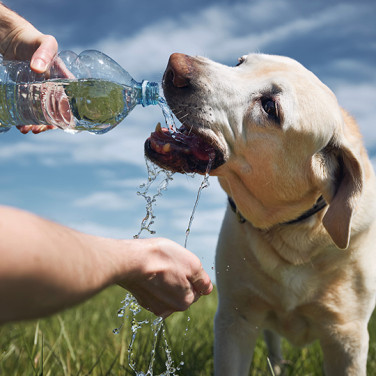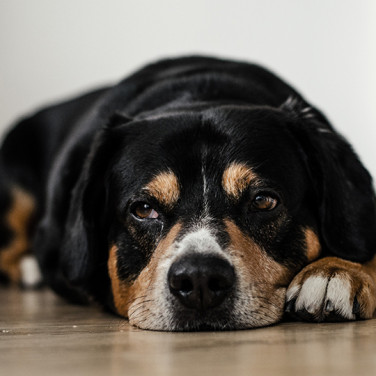SYMPTOMS
Urinary Incontinence (Leaking Urine) in Dogs - Causes and Treatments
페이지 정보
본문
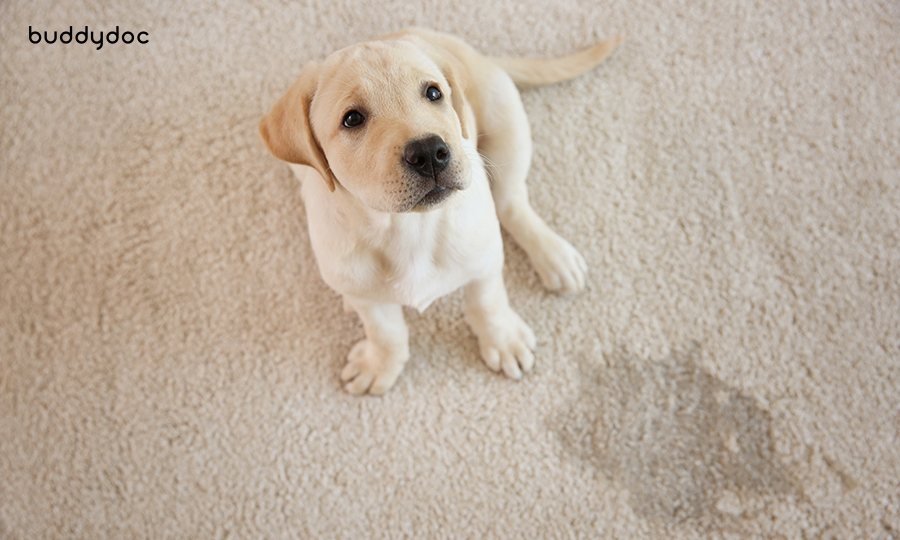
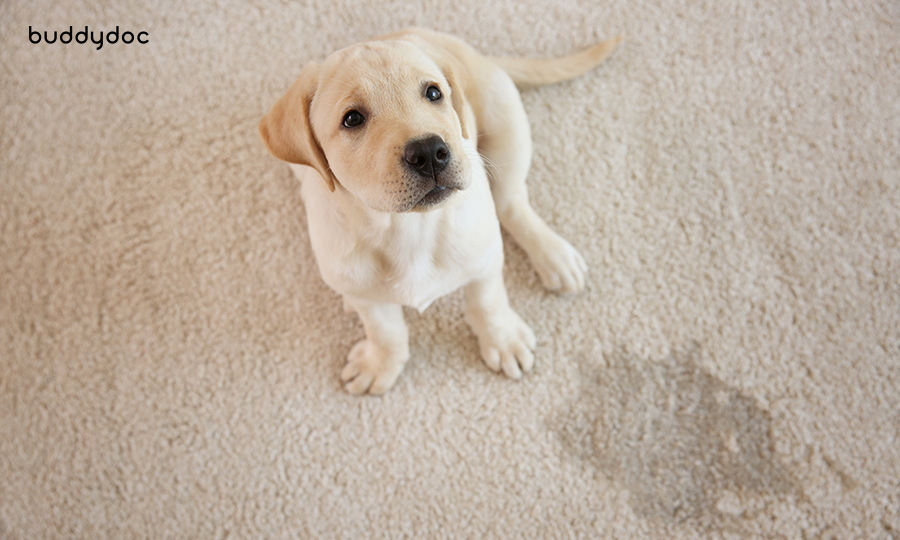
What is dog urinary incontinence?
Urinary incontinence is a fairly common problem in dogs where they involuntarily lose control of their bladder causing small or large amounts of urine to leak. This is also referred to as a leaky bladder and is commonly observed while lying down. It is good to distinguish that this symptom is not a behavior-related urination problem and is usually caused by an underlying medication. Dogs are not aware of it happening. While it can occur at any age, it is more common in middle-aged to older dogs and females.
Causes of urinary incontinence in dogs
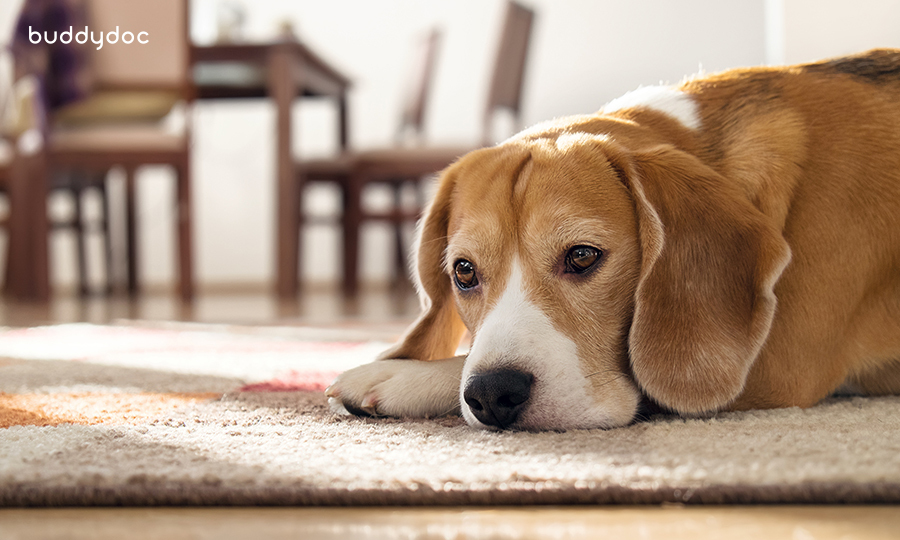
Urinary incontinence is a common issue in dogs that can be caused by a variety of factors. This includes:
-
Brain and spinal cord diseases
Dogs that suffer from brain or spinal cord diseases may experience difficulty passing urine or may dribble urine. This condition is typically accompanied by other signs of neurological disorders, such as paralysis or muscle weakness. Some neurological causes of urinary problems in dogs include damage to the nerves controlling the bladder, spinal injuries, and brain lesions.
-
Hormonal imbalance
Hormone-responsive incontinence is a condition that primarily affects neutered dogs of both sexes but is more common in female dogs. It occurs when there is a hormonal imbalance leading to a loss of muscle tone in the urethra. Urethral sphincter mechanism incompetence (USMI), characterized by low levels of estrogen, is another common hormonal disorder that causes involuntary urine leakage while resting. Hormone-responsive incontinence can manifest months to years after a dog has been neutered or spayed.
-
Urinary issues
Urinary incontinence can be caused by a urinary tract infection, cystitis, stones, or prostate disease. Vaginal stricture is less common but one of the causes of urinary incontinence in female dogs.
Prostate problems are exclusive to male dogs, as female dogs do not possess a prostate gland. Incontinence can occur when the urethra, which is responsible for urine excretion, passes through the prostate. Any blockage in urine flow, such as bladder stones, can result in damage to the bladder muscles and trigger incontinence. Urinary incontinence can also be caused by urinary tract infections, cystitis, and stones, along with prostate disease and vaginal stricture (which is less common in female dogs). Furthermore, bladder compression caused by external conditions such as urinary tract infections or bladder tumors can also lead to urinary incontinence.
-
Aging
As pets age, they may experience changes in their urinary habits. Older pets may have difficulty recognizing appropriate places to urinate, leading to urine in unexpected places. Dogs may also develop urinary incontinence due to weakened bladder muscles and changes in bladder position and support. Senility can contribute to urine dribbling, and factors like obesity and muscle weakness can worsen the problem.
-
Congenital disease
Urinary incontinence in puppies is a common issue that can be caused by a birth defect known as ectopic ureters. This condition occurs when one or both of the ureters, which are tubes that carry urine from the kidneys to the bladder, connect to an abnormal location such as the urethra or vagina, resulting in urinary leakage. Ectopic ureter is the most frequent congenital problem seen in young dogs, and other anatomic abnormalities in the tubes that carry urine to the bladder are rare.
-
Stress
Dogs may retain urine due to stress, fear, or behavioral issues, which can lead to urine leakage when bladder pressure exceeds urethral resistance. Addressing the underlying cause is crucial to prevent complications.
Other signs and symptoms of urinary incontinence in dogs
Dripping urine, irritation, and redness on the skin are the most visible signs of incontinence in dogs. You may notice that your dog will also lick their genitals more than usual. If you notice any of these symptoms, take your dog to the vet for a diagnosis. Incontinence can lead to skin contamination and irritation, and frequent licking can cause redness. This condition is common in spayed female dogs, especially large breeds, but can affect any dog. Sharing detailed information with your vet will help them make an accurate diagnosis.
The risk of a leaking bladder in dogs
Urinary incontinence needs to be addressed and managed as early as possible because it can lead to infection.
Certain breeds are more prone to urinary incontinence, such as:
- German Shepherd
- Doberman Pinscher
- Rottweiler
- English Springer Spaniel
- Weimaraner
- Old English Sheepdog
- Dalmatian
- Collie
- Bearded Collie
- Boxer
Home remedies for urinary incontinence in dogs
Urinary incontinence in dogs can cause stress and mess in the home, but there are ways to manage it. One option is to use doggie diapers or waterproof pads under their bedding. Another is to increase outdoor urination through more frequent walks. It's also important to maintain proper hygiene to prevent infection, as urinary incontinence can quickly lead to skin irritation and other issues. If you observe this symptom, monitor your dog’s condition and consult with your vet for management options.
Diagnosing urinary incontinence in dogs
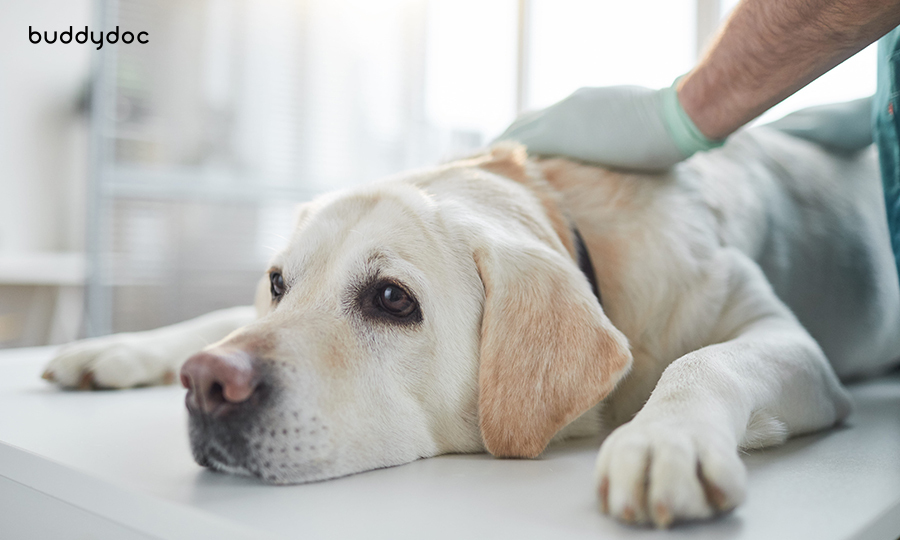
When dealing with a pet experiencing urinary incontinence, it's essential to have a proper diagnosis. Incontinence may be confused with other conditions, such as frequent urination caused by infection or disease. The tests for diagnosing incontinence will depend on the pet's age and symptoms. Before conducting a physical examination, the veterinarian will review your pet's history and perform a medical examination with the guardian. This way, the vet can ensure the proper evaluation and diagnosis of your pet's condition.
Your veterinarian may ask you the following questions:
- When did you notice your pet beginning to leak urine?
- Since it began, have symptoms improved or worsened?
- Is your dog drinking more water than usual as well?
- Do you notice any difficulty or pain with your pet’s bowel movements?
- Are there any other accompanying symptoms?
Different tests are available to evaluate urinary incontinence, depending on age and clinical signs. These tests include urine tests, blood tests, ultrasounds, urine cultures, and radiographs. The results of these tests can help to identify the root cause of urinary incontinence and develop an appropriate treatment plan.
Tests for diagnosing urinary incontinence in dogs
-
Neurological examination
If a nerve problem is suspected, a variety of neurological tests are performed, including examinations of the anal region, tail, perineal sensation, and spinal reflexes.
-
Cystoscopy
Cystoscopy tests for any abnormalities in the bladder or urethra.
-
Blood test
Blood tests are done to check for evidence of kidney damage due to an infection and to check for disorders that can lead to increased urine output. Underlying causes such as diabetes or Cushing’s disease can also be ruled out with blood tests.
-
Urine test
Cystitis can be confirmed through a urine test, which involves collecting a urine sample, diluting it, and checking for bacterial cultures to determine the presence of a bladder infection. Although a bladder infection may cause a strong urge to urinate, it is not considered true urinary incontinence since the dog is aware of its urination.
-
Imaging test
Imaging tests can be used to check for stones or any abnormalities in the urinary tract, and ultrasound can be used to check for tumors in the bladder.
-
Other
If urine retention is observed, urinary catheterization may be necessary to check for obstruction and abnormalities in the urethra. Additionally, depending on the clinical symptoms, further tests, such as intravesical pressure measurement, may be required.
Treatment for urinary incontinence in dogs
Urinary incontinence in dogs can be treated with medication or surgery, depending on the underlying cause identified during veterinary examination. Urinary incontinence in dogs can be fairly successfully treated and managed with the available treatment options.
-
Urinary tract infection
Antibiotics are prescribed to resolve urinary tract infections.
-
Hormonal imbalance
If the problem is due to a hormonal imbalance, hormone therapy may be recommended. Estrogen supplementation such as estriol or diethylstilbestrol can be prescribed for female dogs. For male dogs testosterone can be provided, to help relieve incontinence. Usually, estrogen or drugs that increase urethral sphincter tone, such as phenylpropanolamine (PPA), imipramine, or hormone replacements, such as diethylstilbestrol (DES), are used alone or in combination. About 70% of hormonal problems respond well to medication alone.
-
Surgery
Surgery may be required in cases such as bladder stones and congenital malformations.
-
Other
If no specific cause of urinary incontinence can be identified, drugs that increase the tone of the bladder muscles may be administered. Drug therapy for urinary incontinence may be based on trying several drugs in different doses until an effective combination is found.
Prognosis of urinary incontinence in dogs
The prognosis for managing urinary incontinence in dogs is generally good, and specific outcomes are determined by the underlying cause. Most cases can be effectively managed with a combination of medication, lifestyle modifications such as more frequent bathroom breaks, and careful monitoring.
Preventing urinary incontinence in dogs
The prevention of urinary incontinence for certain dogs may be hard to practice, but early action when symptoms appear can help prevent more serious complications. The response to treatment is generally very positive and early treatment can help guarantee a happier and healthier outlook for your pet’s quality of life.
Find out more about your dog’s symptoms and diseases on the Buddydoc app!
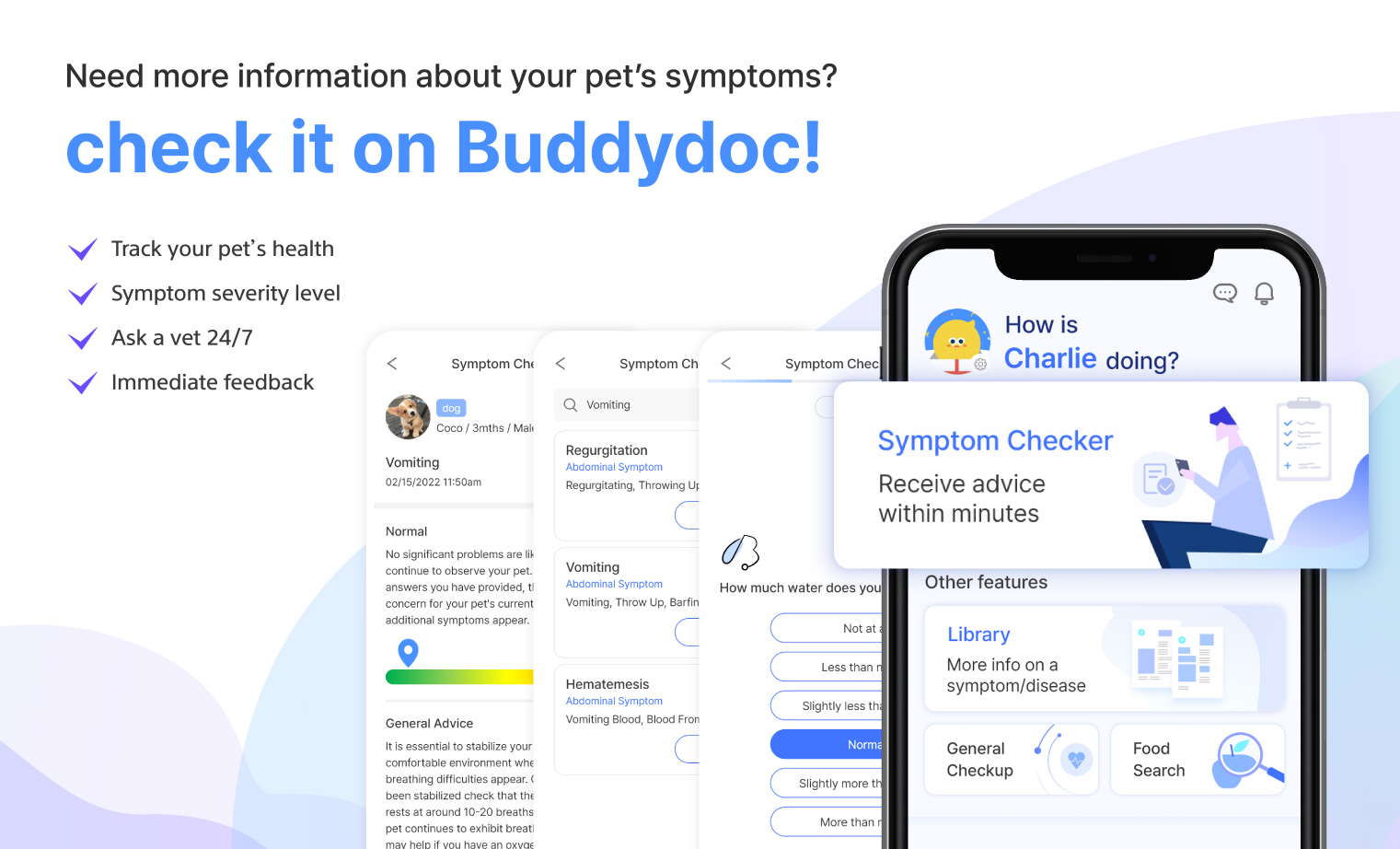
The Buddydoc library is filled with everything you’d want to know about each symptom and disease your pet may experience. If you would like to find out more about the causes, signs, treatments, preventions, and more for your dog’s disease. Try out the Buddydoc app and search for your pet’s symptoms or diseases in the Buddydoc library.




